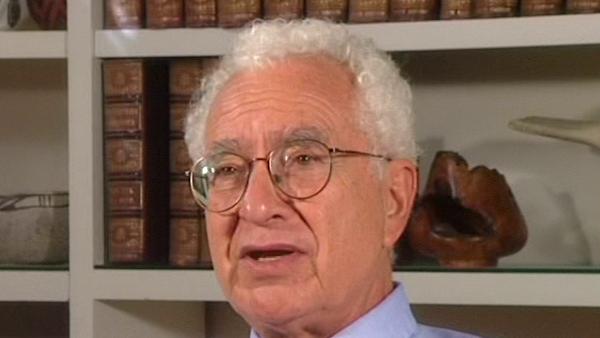NEXT STORY

Parastatistics and color: using the correct data
RELATED STORIES

NEXT STORY

Parastatistics and color: using the correct data
RELATED STORIES


|
Views | Duration | |
|---|---|---|---|
| 131. Feynman's partons | 1458 | 03:12 | |
| 132. Quarks as asymptotic states. Missed opportunities | 580 | 01:35 | |
| 133. A year at CERN. Parastatistics and color | 516 | 02:57 | |
| 134. Parastatistics and color: using the correct data | 460 | 00:52 | |
| 135. Calculating pi-zero into two gamma. Giving a talk in Munich | 476 | 02:59 | |
| 136. My 'business trip' honeymoon in 1992 | 501 | 03:07 | |
| 137. Reading from Quarks, color and QCD | 477 | 02:37 | |
| 138. The ninth axial vector current and the corresponding pseudo-scalar... | 434 | 03:03 | |
| 139. Asymptotic freedom in field theory; Gross and Wilczek | 779 | 02:03 | |
| 140. The color picture with confined color | 444 | 01:06 |


Fritzsch and I wrote about these things a little bit, but I… I don't think we contributed very much, just another point of view—pointing out that what these ideas meant was that somehow free field theory was the model for what was going on deep inside. But that was already clear really from the work of Bjorken and… and Feynman, and others. Then in 1971 I went to Europe to spend the year at CERN, and Fritzsch was there with me, and so was Bill Bardeen and the three of us began to talk about this whole set of issues. First thing we did was to look at parastatistics and color. By this time I had appreciated that a color variable would work. I'm not sure if I was aware even then of Nambu's paper of 1966, but in any case I now understood the point: that we would get the right statistics if we had another variable, a three-valued variable, and that variable were totally anti-symmetric; then we would get a totally symmetric state in the spin and… and SU(3) variable and that would be exactly compatible with observations of baryons. Then… however there were other states of this variable, and what Nambu had shown was that they would lie higher if you had a vector boson exchange between quarks. But what I suggested now was that they would lie infinitely higher, in other words that you would have restriction to the singlet in this new variable, a totally anti-symmetric state in this new variable. Nothing else would be possible. So we would have color, but color non-singlets would be prohibited. We called the colors red, white and blue at first, but then we decided maybe that was inappropriate so somebody—maybe it was Feynman, I forget who—somebody suggested that I use red, blue and green, which were the so-called primary colors in some very approximate theory of human color vision. But anyway, the idea of three so-called colors, and the restriction, absolute restriction to the singlet, so that no color non-singlets could be… could come out to be seen, that was something that we emphasized right away.
New York-born physicist Murray Gell-Mann (1929-2019) was known for his creation of the eightfold way, an ordering system for subatomic particles, comparable to the periodic table. His discovery of the omega-minus particle filled a gap in the system, brought the theory wide acceptance and led to Gell-Mann's winning the Nobel Prize in Physics in 1969.
Title: A year at CERN. Parastatistics and color
Listeners: Geoffrey West
Geoffrey West is a Staff Member, Fellow, and Program Manager for High Energy Physics at Los Alamos National Laboratory. He is also a member of The Santa Fe Institute. He is a native of England and was educated at Cambridge University (B.A. 1961). He received his Ph.D. from Stanford University in 1966 followed by post-doctoral appointments at Cornell and Harvard Universities. He returned to Stanford as a faculty member in 1970. He left to build and lead the Theoretical High Energy Physics Group at Los Alamos. He has numerous scientific publications including the editing of three books. His primary interest has been in fundamental questions in Physics, especially those concerning the elementary particles and their interactions. His long-term fascination in general scaling phenomena grew out of his work on scaling in quantum chromodynamics and the unification of all forces of nature. In 1996 this evolved into the highly productive collaboration with James Brown and Brian Enquist on the origin of allometric scaling laws in biology and the development of realistic quantitative models that analyse the influence of size on the structural and functional design of organisms.
Tags: Europe, CERN, James Bjorken, Richard Feynman, Harald Fritzsch, Bill Bardeen, Yoichiro Nambu
Duration: 2 minutes, 58 seconds
Date story recorded: October 1997
Date story went live: 29 September 2010